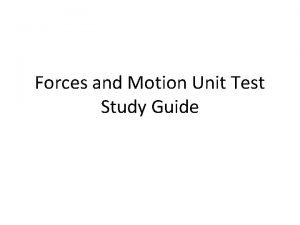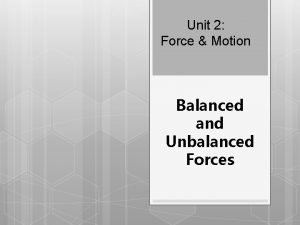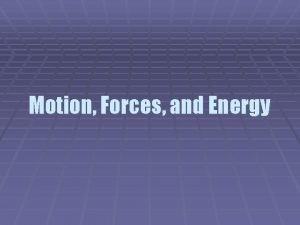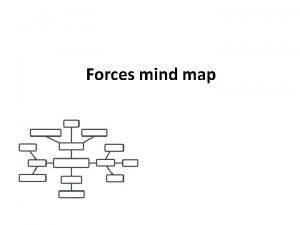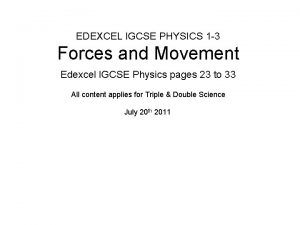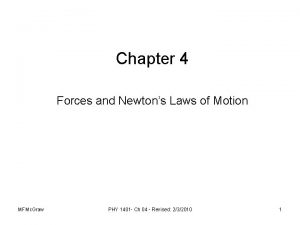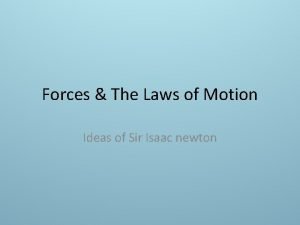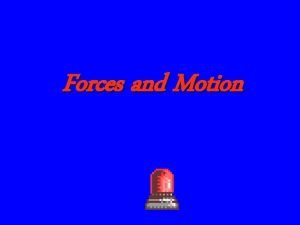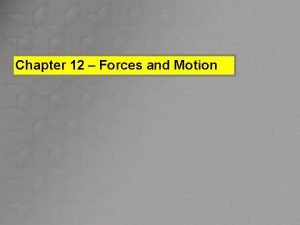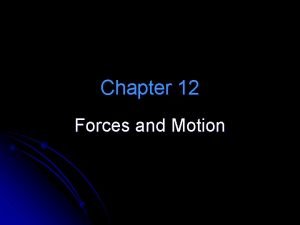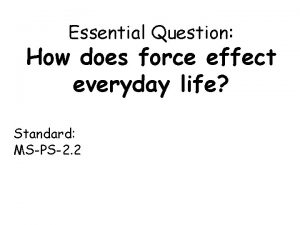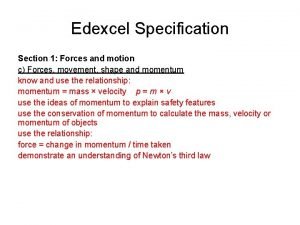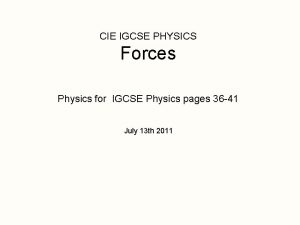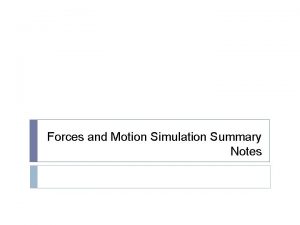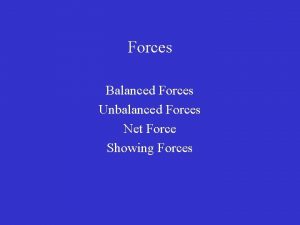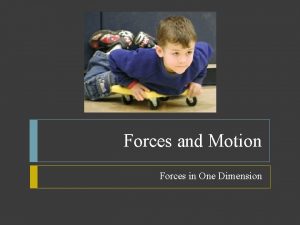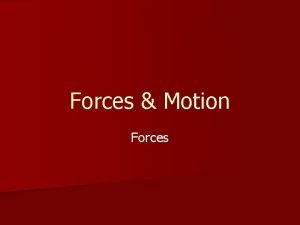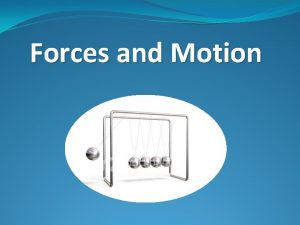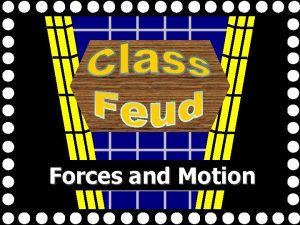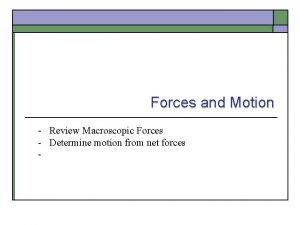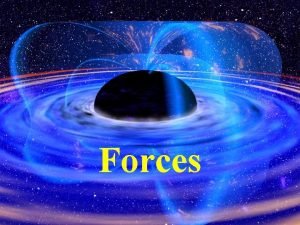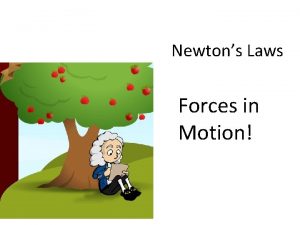UNIT 4 FORCES AND MOTION FORCE VIDEO http


















- Slides: 18

UNIT 4 FORCES AND MOTION

FORCE VIDEO • http: //studyjams. scholastic. com/studyjams/science/forces-andmotion/force-and-motion. htm • How did the soccer ball move? • What is a force? • What kind of force was done on the soccer ball? • The force of the kick sent the ball in motion.

VIDEO CONTINUED • Inertia: tendency for an object to resist change in motion. • Ball was sitting still before being kicked. • Friction: A force acting against a moving object. • • Texture of grace. More friction means more force needed.

FILL IN THE BLANK • A force is a push or pull that acts on an object. • Every force has a strength, or magnitude. This strength is measured in units called newtons (N). • Forces can change the way objects move. • Write an example on how forces are exerted on an object. (examples on page 62)

CONTACT FORCES • A force that requires two pieces of matter to touch is called a Contact Force. • One kind of contact force is Friction is the force that results when two materials rub against each other. • Solids are not the only materials that can cause friction. also resist motion when an object pushes against them. Air and water

CONTINUE WITH GRAPHIC ORGANIZER

NON-CONTACT FORCES • A force that acts at a distance is called a non-contact force. • Three examples of non-contact forces are: • ___Gravity • ___Electric force • ___Magnetic Force

BALANCED AND UNBALANCED FORCES Balanced Forces • Equal forces that combine to act on an object in opposite directions are Balanced Forces. • When the net forces are equal the forces are zero. Unbalanced Forces • Unbalanced forces occurs when one of the forces action upon an object is greater than another force.

BALANCED FORCE

UNBALANCED FORCES

BALANCED AND UNBALANCED FORCES

BRAINPOP GAME • https: //www. brainpop. com/games/balancingact/

TUG A WAR

FILL OUT THE FIRST PAGE WITH WHAT YOU THINK WILL HAPPEN. • Boys vs. Girls • Even number of students on one side vs. even number of students on the other side.

ACCELERATION

ACCELERATION • http: //studyjams. scholastic. com/studyjams/science/forces-andmotion/acceleration. htm • Rate at which the speed or direction of motion changes over time. • Acceleration is not just when an object is speeding up. • In science it means any change in motion. • If the object moves in a straight line with no change in speed, there is no acceleration. • What can you think of that has acceleration?

• Motion without acceleration is uniform motion. • An example would be a train on a straight track at a steady speed.

RESOURCES: • • • http: //studyjams. scholastic. com/studyjams/science/forces-and-motion/force-and-motion. htm Persons interactive book. Brain pop Standards 5. P. 5: The student will demonstrate an understanding of the factors that affect the motion of an object 5. P. 5 A. 2 Develop and use models to explain how the amount or type of force (contact and noncontact) affects the motion of an object. 5. P. 5 A. 3 Plan and conduct controlled scientific investigations to test the effects of balanced and unbalanced forces on the rate and direction of motion of objects.
 Force and motion unit test
Force and motion unit test Unit 3 force motion energy answer key
Unit 3 force motion energy answer key Unlike parallel force system
Unlike parallel force system Force and motion
Force and motion Balanced forces and unbalanced forces venn diagram
Balanced forces and unbalanced forces venn diagram Is erosion a constructive force
Is erosion a constructive force Standing still is balanced or unbalanced
Standing still is balanced or unbalanced Motion forces and energy
Motion forces and energy Forces mindmap
Forces mindmap Edexcel igcse physics movement and position questions
Edexcel igcse physics movement and position questions Normal force
Normal force Chapter 11 section 3 motion and force answer key
Chapter 11 section 3 motion and force answer key Forces and the laws of motion problem b
Forces and the laws of motion problem b Newton's laws jeopardy
Newton's laws jeopardy Chapter 12 forces and motion
Chapter 12 forces and motion Chapter 12 forces and motion
Chapter 12 forces and motion Study jams force and motion
Study jams force and motion Is momentum a force
Is momentum a force Igcse physics forces and motion
Igcse physics forces and motion
